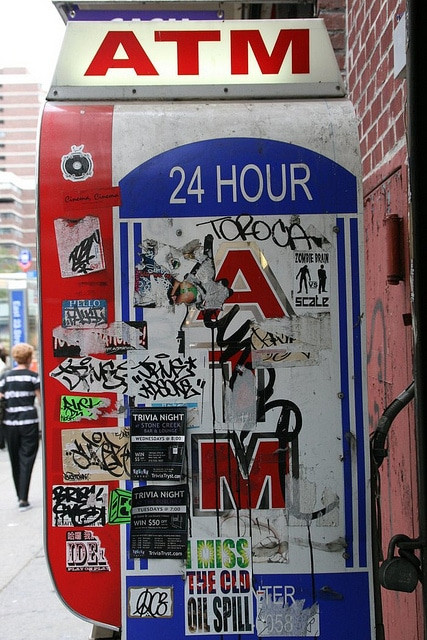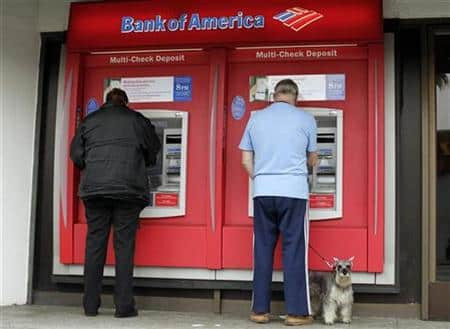Are you planning a trip to New York and wondering about the best way to handle your currency exchange from Euros to Dollars? Knowing how, when, and where to exchange your money is crucial for a smooth and enjoyable trip. There are several convenient options available, from exchanging currency before you leave to withdrawing dollars upon arrival or simply using your credit card for payments in New York. Let’s explore each of these methods to help you make the most informed decisions for your travel needs.
Exchanging Euros for Dollars Before Your Departure
If you prefer to have US dollars in hand before you even board your flight, there are three main places where you can exchange your Euros:
- Your Bank
- The Post Office (Postal Exchange Services)
- Currency Exchange Bureaus
Most Convenient: Your Bank or Post Office
Potentially Most Advantageous Rates: Currency Exchange Bureaus
For many, heading to their familiar bank or local post office feels like the easiest option. You might already have a relationship with your bank, making it a seemingly straightforward choice to obtain dollars before traveling to New York. However, it’s important to note that banks and post offices often offer less competitive exchange rates compared to specialized currency exchange bureaus. These bureaus typically focus on currency exchange and may provide more favorable rates to attract customers.
Key Considerations:
- Exchange Rates vs. Market Rates: Be aware that the exchange rates you see on financial websites are indicative market rates. The actual rates offered by banks and exchange services will always include a margin, meaning you won’t get the exact market rate. This margin is how these services make a profit. Therefore, the rate you receive will always be slightly less beneficial than the market rate.
- Processing Time: If you opt for your bank or post office, plan ahead! It can take 4 to 5 business days to receive your dollars, especially if they don’t keep large amounts of foreign currency on hand. Currency exchange bureaus usually offer immediate exchange services, making them ideal for last-minute needs.
- Rate Comparison is Key: Exchange rates can vary significantly between different institutions. To maximize the dollars you receive, it’s wise to compare the rates offered by your bank, the post office, and several currency exchange bureaus before making your decision. Even small differences in rates can add up, especially when exchanging larger amounts.
Withdrawing Dollars Upon Arrival in New York City
 Man using an ATM in New York City
Man using an ATM in New York City
New York City is awash with ATMs, just like any major city. However, it’s helpful to know that there are generally two types of ATMs you’ll encounter in NYC:
- Bank-Owned ATMs
- Independent ATM Operators (often branded as ATMs or Automated Teller Machines)
Both types allow you to easily withdraw cash and are readily available throughout the city, from street corners to supermarkets and convenience stores. Bank-owned ATMs typically permit larger withdrawal amounts, while independent ATMs often have lower withdrawal limits, commonly around $200 per transaction. If you need to withdraw more than $200, it’s generally better to use bank ATMs to avoid multiple transaction fees.
When you withdraw dollars from an ATM in New York, you will likely incur fees from both the ATM operator and your home bank.
- ATM Operator Fee: The US bank or ATM operator will charge a transaction fee for using their machine. This fee can range from approximately $2.50 to $3.50 per withdrawal, and is usually clearly displayed on the ATM screen before you finalize the transaction.
- Foreign Transaction Fee from Your Bank: In addition to the ATM operator fee, your bank back home will also likely charge a foreign transaction fee for using an ATM abroad. These fees vary depending on your bank and account type. It’s crucial to check with your bank before traveling to understand their specific fees for international ATM withdrawals.
Tip: Some banks have international partnerships that can reduce or eliminate ATM fees. For example, certain banking alliances offer fee-free withdrawals at partner banks’ ATMs when you travel internationally. Check if your bank has any such partnerships that could benefit you in New York.
 Bank of America ATM in New York City
Bank of America ATM in New York City
Paying with Your Credit Card
When possible, using your credit card for payments is often more cost-effective than making ATM withdrawals, especially for larger expenses. The fees associated with credit card transactions are generally lower than the combined fees you might incur from ATM withdrawals.
Credit Card Transaction Fees:
Similar to ATM withdrawals, using your credit card internationally will likely involve fees. These fees are typically structured in one of two ways:
- Percentage-Based Fee: A percentage of the transaction amount. This is the most common type of fee, often ranging from 1% to 3% of the purchase price.
- Fixed Fee Plus Percentage: Some banks might charge a small fixed fee per transaction in addition to a percentage of the transaction amount.
It’s essential to check with your credit card provider to understand their specific foreign transaction fees before your trip.
Don’t be surprised by the credit card payment process in New York, as it differs from systems in some other countries. Instead of entering a PIN code at the point of sale, you’ll typically be presented with a receipt to sign. This receipt also provides a space to manually add a tip to the total amount, which is customary in the US service industry.
In summary, it’s a good strategy to exchange a small amount of Euros to Dollars before you leave for New York to cover your initial expenses upon arrival, such as taxi fares, subway cards, or a quick meal. For everyday spending and larger purchases, consider using your credit card due to potentially lower fees compared to frequent ATM withdrawals. And remember to research if your bank has any partner banks in the US to potentially minimize ATM withdrawal fees.
